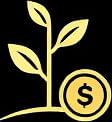Portfolio Building Strategies for Creatives Seeking Financial Growth
 by Marlene Keeling
by Marlene Keeling
Discover practical steps for creatives to build a portfolio that attracts clients and opens income opportunities. This guide covers essential techniques to showcase work effectively and turn creativity into steady earnings, empowering everyday individuals to achieve financial independence.

For many creatives, such as writers, designers, and artists, a well-constructed portfolio serves as a key tool for generating income. It acts as a visual resume that highlights skills and attracts potential clients. In the first stages, focus on gathering your best work to form a solid foundation.
Why a Portfolio Matters for Earning
A portfolio can directly lead to paid opportunities by demonstrating value to employers or buyers. For instance, photographers might use theirs to secure gigs with brands, while graphic designers can land freelance projects. This approach helps in building a steady stream of revenue through repeated client engagements.
One effective way to start is by selecting pieces that best represent your style. Portfolio creation begins with quality over quantity, ensuring each item showcases your unique abilities. Once compiled, sharing it online can open doors to new markets and higher-paying jobs.
Steps to Create Your Portfolio
Begin by organizing your work into categories. This makes it easier for viewers to navigate and find relevant examples. For example, a writer could group articles by topic, such as technology or lifestyle.
Next, choose a platform to host your portfolio. Options like personal websites or dedicated sites offer simple ways to display your creations. Make sure the layout is clean and professional to keep visitors engaged longer.
Incorporate feedback from peers to refine your selections. This step ensures your portfolio remains fresh and appealing, potentially leading to more inquiries and paid work. As you add new projects, update regularly to reflect growth and attract repeat business.
Turning Your Portfolio into Income
Once built, use your portfolio to pursue freelance platforms where clients seek creative services. Platforms often feature sections for portfolios, allowing you to bid on jobs that match your expertise. This can result in multiple income streams from various sources.
Networking plays a crucial role here. Share your portfolio at events or on social media to connect with potential buyers. Many creatives find that one strong connection leads to ongoing contracts and financial stability.
Consider pricing your services based on the value shown in your portfolio. For example, if your designs have helped previous clients achieve results, use that to justify higher rates. This strategy not only boosts earnings but also builds confidence in your abilities.
Practical Tips for Success
Keep your portfolio focused and concise. Aim for 10-15 pieces that highlight your strongest work, avoiding anything outdated. Use high-quality images or samples to make a lasting impression.
Track your progress by noting how often your portfolio leads to inquiries. This data can guide improvements and help measure financial returns from your efforts.
For those starting out, begin with free resources to build skills. Online tools provide templates that simplify the process, allowing you to focus on content rather than technical details.
Real Examples of Portfolio Success
Take the story of a digital artist who turned a simple online portfolio into a full-time business. By featuring innovative illustrations, they attracted commissions from companies, leading to a significant income increase within a year.
Another example involves a content creator who used their portfolio to secure writing assignments. Through consistent updates and targeted sharing, they built a client base that provided reliable monthly earnings.
These cases show how dedication to income strategies through portfolio development can lead to real results. With persistence, everyday creatives can achieve similar outcomes.
Staying Motivated and Consistent
Building a portfolio is an ongoing process that requires regular effort. Set small goals, like adding one new piece each month, to maintain momentum. Celebrate milestones, such as landing your first paid job, to stay inspired.
Remember, the goal is financial growth through creativity. By treating your portfolio as an investment in your future, you pave the way for independence and success.
In summary, a well-maintained portfolio opens pathways to earning opportunities for creatives. Follow these steps to create one that not only showcases your talents but also drives tangible financial benefits.
